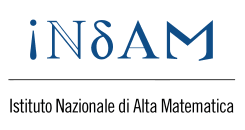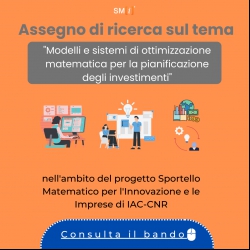IAC Mission:
Modern society is becoming increasingly complex, and new technologies are being developed more and more rapidly. In this context mathematics is not merely a language to describe scientific processes and technologies. Its real value lies much more in depth. The high level of abstraction of mathematics does not only increase theoretical insight, it also provides, at low costs, flexible methods, efficient algorithms and more accurate solutions. In other words, a correct and intelligent combination of mathematics and computing power opens up entirely new possibilities to deal with complexity and to design efficient solution techniques which meet with the flexibility requirements which are typical for today's applications.
It is in this context that the Institute is working, in the firm belief that the CNR offers the best conditions in Italy for promoting this kind of activities. In fact the specific mission of the Institute is "to develop highly advanced mathematical, statistical and computational methods in order to solve, in a mostly interdisciplinary context, problems with strong relevance to society and industry". Applications can be found in many fields having direct impact on the society such as engineering (material science, turbulence, Bose-Einstein condensation, microflows), medical sciences and biology (medical image processing, genomics, the human immune system, blood flow), environment (analysis of satellite data for earth observation, modelling icefield processes on polar lithosphere), transportation (urban traffic modeling), finance and economics (optimization of the management of the Public Debt in Italy, micro-dynamics of financial markets), cultural heritage (degradation of ancient monuments), manufacturing (robotics, computer vision, scheduling problems), computer science (networks, security).
For two different reasons interdisciplinarity is a key concept for the research at the Institute. The first - and most obvious - one concerns the intensive interaction between mathematics and applications. Mathematics does not only provide solutions for all sort of problems, but viceversa, complex real-world problems directly stimulate the development of new mathematical techniques and approaches. For example, practical problems in computer vision require the development of new theoretical and numerical methods in the field of calculus of variations; medical applications of magnetic resonance require the development of new results in both statistics and computational linear algebra; the simulation of the human immune system leads to new types of computational modeling. Even classical fields, such as fluid dynamics, when looked from a more general mathematical perspective, yield new methodologies of wide interdisciplinary applicability in science and engineering. The choice of the examples is arbitrary and many other examples can easily be added to the list.










